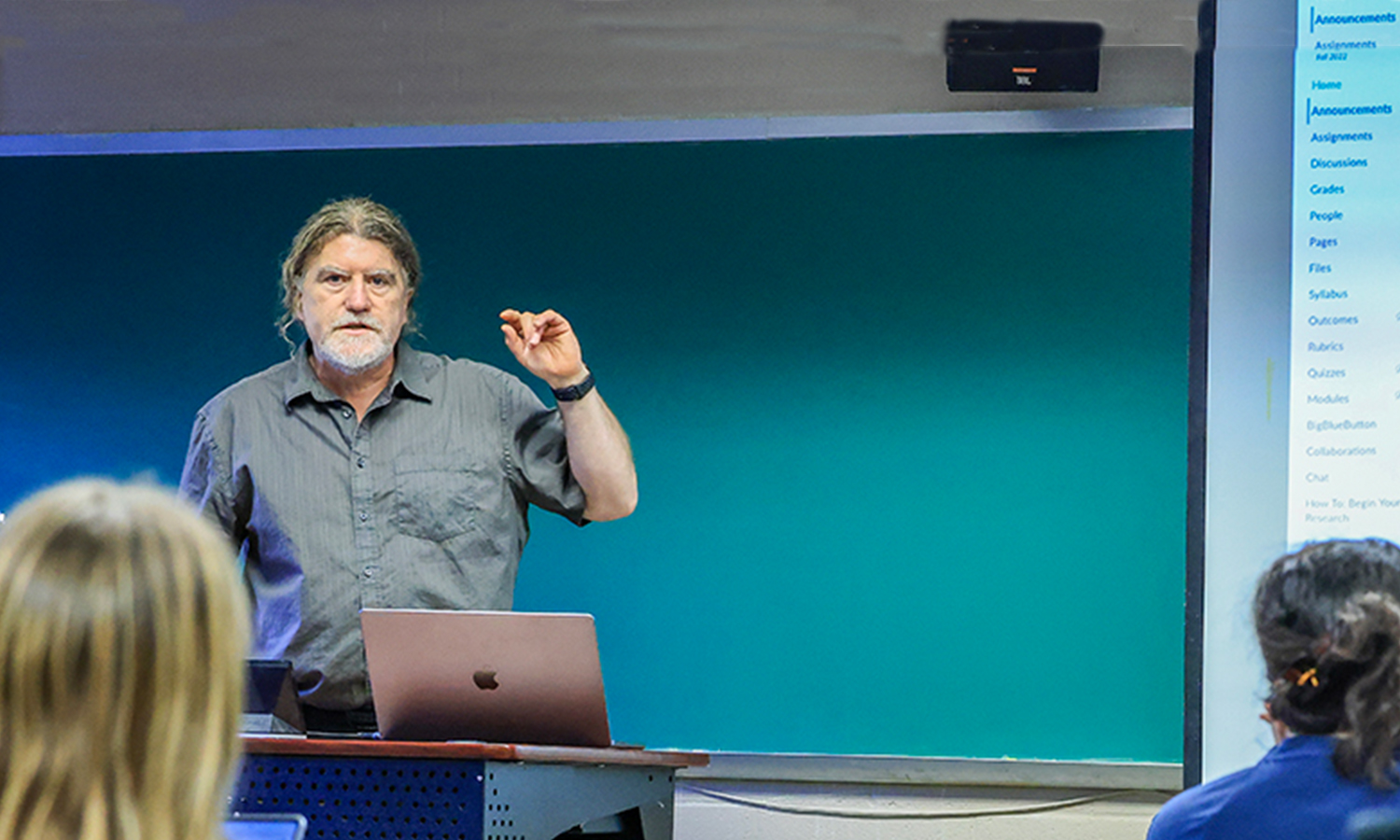
HWS News
8 December 2022 • STEM Physics: The Most Mind Blowing Discipline By Ella Weiss ’24
Associate Professor Steven Penn teaches “PHYSX: Knowing the World,” instructing and advising first-year students on the Physics track.
Every Tuesday and Thursday morning, 10 first-year students enter Eaton Hall 110 classroom to learn from Associate Professor of Physics Steven Penn, an MIT-educated physicist and member of the LIGO Scientific Collaboration, the Nobel-winning* research team that first detected gravitational waves predicted by Einstein’s general theory of relativity. The internationally recognized scientist has been at HWS for two decades and, in addition to teaching core physics courses, leads the first-year seminar “PHYSX: Knowing the World,” an exploration of the foundations of physics and how they describe the world around us.
Associate Professor Steven Penn
Penn enjoys sharing his passion with students early in their academic careers. “Physics is the most fascinating, mind-blowing discipline. It requires a rigor, clarity and unflagging persistence in thinking, but it rewards the student with the thrill of understanding the greatest puzzle in the universe, which is the composition and operation of the universe itself,” he says.
The goal of “Knowing the World,” Penn says, is “to light an intellectual fire in my students and give them a glimpse of the most interesting concepts that physics has to offer.”
Lucy McWilliams ’26, who attended Pawling High School in Pawling (Dutchess County) N.Y., says she shares Penn’s passion for physics and is honored to be in the class and to have Penn as her advisor.
“During our first class, Professor Penn said his goal for the semester was to inspire us and get us to question the world around us, and he did not fall short in this goal,” says McWilliams. “He encourages us to be curious, constantly asking us to “go back to the playground” and “play with the world like children.”
The semester has also been filled with notable guest lecturers and alums such as Jens Gundlach, an experimental physicist at the University of Washington, who has made the most precise measurement of the gravitational constant; Larry Weinstein, a professor of physics at Old Dominion University, who developed the “guesstimation” method; and Britton Plourde, a professor of physics at Syracuse University, who is a leader in developing quantum computers. Alum guests have included Jacob Podkaminer ’08, a material scientist at 3M Corporate Research Labs, and Harris Goldman ’08, a research physicist at SRI International.
McWilliams enjoyed hearing from alums. “Their talk really helped me put things into perspective in terms of how I can go from being a student here studying mathematics and physics, to eventually having a career in this field.”
Another component of the course integrates peer writing instruction through the Writing Colleagues program to assist students with the course requirement of four short papers and a longer research paper. “Peer instruction makes the process of teaching college-level writing more approachable. My own experience is that you fully learn a subject when you are required to teach it. Therefore, the Writing Colleagues program allows our best students in writing to better hone their craft by teaching these skills to the first years,” Penn says.
Click here to learn more about Penn and his groundbreaking research on gravitational waves.
*The arcane rules of the Nobel Committee state that each prize can be awarded to no more than 3 people per year. The recipients of the 2017 Nobel Prize in Physics were three of the founders of LIGO: Rai Weiss, Kip Thorne, and Barry Barish. In their acceptance speeches, Rai, Kip, and Barry made clear their disappointment with the committee’s decision and stated that the prize should have been bestowed upon the entire collaboration.



